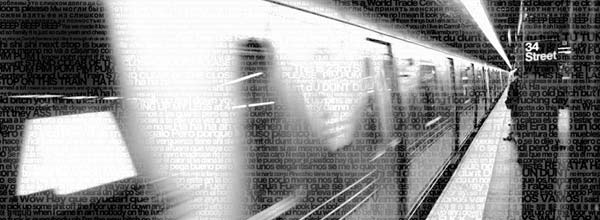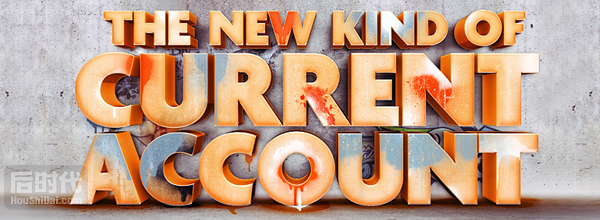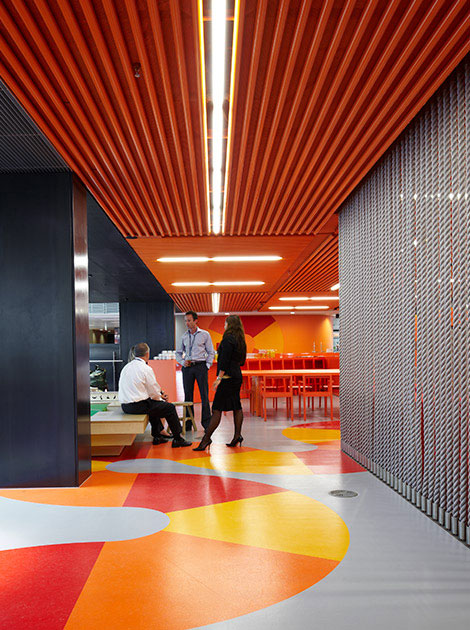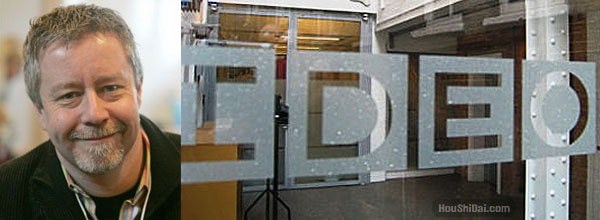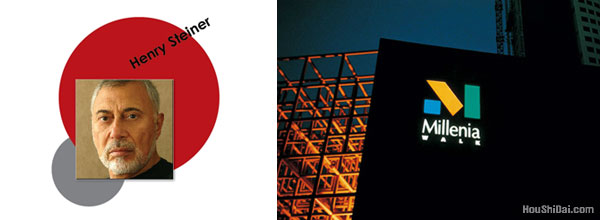гАКеМЕи±™жЦѓеЃ£и®АгАЛ
еМЕи±™жЦѓеЃ£и®АпЉМ1919.4 пЉМж†ЉзљЧзЪЃдєМжЦѓ(Walter Gropius)
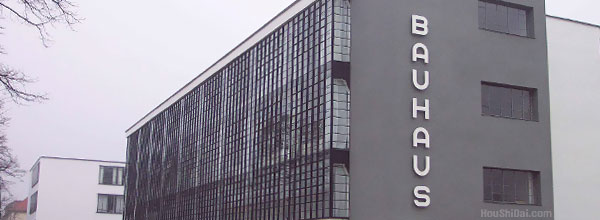
дЄАеИЗеИЫйА†жіїеК®зЪДзїИжЮБзЫЃж†Зе∞±жШѓеїЇз≠СпЉБдЄЇеїЇз≠СињЫи°Ми£Ей•∞дЄАеЇ¶жШѓзЊОжЬѓжЬАйЂШе∞ЪзЪДеКЯиГљпЉМиАМдЄФзЊОжЬѓдєЯжШѓдЉЯе§ІзЪДеїЇз≠СдЄНеПѓжИЦзЉЇзЪДдЉЩдЉігАВе¶ВдїКпЉМеЃГдїђиЗ™йЄ£еЊЧжДПеЬ∞綿猧糥е±ЕпЉМиАМеПѓиГљдїОињЩзІНе±АйЭҐйЗМжЛѓжХСеЃГдїђзЪДеФѓдЄАеЗЇиЈѓпЉМе∞±жШѓиЃ©дЄАеИЗжЙЛеЈ•иЙЇдЇЇиЗ™иІЙеЬ∞ињЫи°МеЫҐзїУеРИдљЬгАВеїЇз≠СеЄИгАБзФїеЃґеТМйЫХе°СеЃґењЕй°їйЗНжЦ∞иЃ§иѓЖеИ∞пЉМжЧ†иЃЇжШѓдљЬдЄЇжХідљУпЉМињШжШѓеЃГзЪДеРДдЄ™е±АйГ®пЉМеїЇз≠СйГљеЕЈе§ЗзЭАеРИжИРзЪДзЙєжАІгАВжЬЙдЇЖињЩзІНиЃ§иѓЖдї•еРОпЉМдїЦдїђзЪДдљЬеУБе∞±дЉЪеЕЕжї°зЬЯж≠£зЪДеїЇз≠Сз≤Њз•ЮгАВиАМдљЬдЄЇвАЬж≤ЩйЊЩиЙЇжЬѓвАЭпЉМињЩзІНз≤Њз•ЮеЈ≤зїПиН°зДґжЧ†е≠ШгАВ
иАБеЉПзЪДиЙЇжЬѓйЩҐж†°ж≤°жЬЙиГљеКЫжЭ•еИЫйА†ињЩзІНзїЯдЄАпЉЪиѓізЬЯзЪДпЉМжЧҐзДґиЙЇжЬѓжШѓжХЩдЄНдЉЪзЪДпЉМдїЦдїђеПИжАОдєИиГље§ЯеБЪеИ∞ињЩдЄАзВєеСҐпЉЯе≠¶ж†°ењЕй°їйЗНжЦ∞襀еРЄзЇ≥ињЫдљЬеЭКйЗМеОїгАВеЫЊж°ИиЃЊиЃ°еЄИеТМеЃЮзФ®иЙЇжЬѓеЃґзЪД姩еЬ∞йЗМеП™жЬЙеИґеЫЊеТМзїШзФїпЉМеЃГжЬАзїИењЕй°їеПШеЫЮдЄАдЄ™еїЇйА†дљЬеУБзЪДдЄЦзХМгАВжѓФе¶ВиѓіпЉМзО∞еЬ®жЬЙдЄАдЄ™еєіиљїдЇЇеЬ®еИЫйА†жіїеК®дЄ≠жДЯеИ∞еЕґдєРиЮНиЮНпЉМе¶ВжЮЬиЃ©дїЦеГПеЙНдЇЇдЄАж†ЈпЉМдЄАеЕ•и°Ме∞±еЕИе≠¶дЉЪдЄАйЧ®жЙЛиЙЇпЉМйВ£дєИпЉМдЄНеЗЇжіїеДњзЪДвАЬиЙЇжЬѓеЃґвАЭе∞±дЄНдЉЪеЖНдЄЇдЄНеРИжЧґеЃЬзЪДиЙЇжЬѓжАІиАМж®™йБ≠и∞іиі£пЉМеЫ†дЄЇдїЦињШеПѓдї•жККиЗ™еЈ±зЪДжКАеЈІзФ®еЬ®дЄАйЧ®жЙЛиЙЇдЄКпЉМдїЦеПѓдї•еАЯж≠§еБЪеЗЇдЉЯе§ІзЪДдљЬеУБжЭ•гАВ
еїЇз≠СеЄИдїђгАБзФїеЃґдїђгАБйЫХе°СеЃґдїђпЉМжИСдїђењЕй°їеЫЮељТжЙЛеЈ•иЙЇпЉБеЫ†дЄЇжЙАи∞УзЪДвАЬиБМдЄЪиЙЇжЬѓвАЭињЩзІНдЄЬи•њеєґдЄНе≠ШеЬ®гАВиЙЇжЬѓеЃґдЄОеЈ•еМ†дєЛйЧіеєґж≤°жЬЙж†єжЬђзЪДдЄНеРМгАВиЙЇжЬѓеЃґе∞±жШѓйЂШзЇІзЪДеЈ•еМ†гАВзФ±дЇО姩жБ©зЕІиААпЉМеЬ®еЗЇдєОжДПжЦЩзЪДжЯРдЄ™зБµеЕЙдєНзО∞зЪДеАПењљйЧіпЉМиЙЇжЬѓдЉЪдЄНзїПжДПеЬ∞дїОдїЦзЪДжЙЛдЄ≠зїљжФЊеЗЇжЭ•пЉМдљЖжШѓпЉМжѓПдЄАдљНиЙЇжЬѓеЃґйГљй¶ЦеЕИењЕй°їеЕЈе§ЗжЙЛеЈ•иЙЇзЪДеЯЇз°АгАВж≠£жШѓеЬ®еЈ•иЙЇжКАеЈІдЄ≠пЉМиХіжґµзЭАеИЫйА†еКЫжЬАеИЭзЪДжЇРж≥ЙгАВ
еЫ†ж≠§пЉМиЃ©жИСдїђжЭ•еИЫеКЮдЄАдЄ™жЦ∞еЮЛзЪДжЙЛеЈ•иЙЇдЇЇи°МдЉЪпЉМеПЦжґИеЈ•еМ†дЄОиЙЇжЬѓеЃґзЪДз≠ЙзЇІеЈЃеЉВпЉМеЖНдєЯдЄНи¶БзФ®еЃГж†СиµЈе¶ДиЗ™е∞Ке§ІзЪДиЧ©зѓ±пЉБиЃ©жИСдїђдЄАеРМжЬЯеЊЕгАБжЮДжАЭеєґдЄФеИЫйА†еЗЇжЬ™жЭ•зЪДжЦ∞еїЇз≠СпЉМзФ®еЃГжККдЄАеИЗвАФвАФеїЇз≠СдЄОйЫХе°СдЄОзїШзФївАФвАФйГљзїДеРИеЬ®дЄАдЄ™еНХдЄАзЪД嚥еЉПйЗМпЉМжЬЙжЬЭдЄАжЧ•пЉМдїЦе∞ЖдЉЪдїОзЩЊдЄЗеЈ•дЇЇзЪДжЙЛдЄ≠еЖЙеЖЙеЬ∞еНЗдЄК姩е†ВпЉМж∞іжЩґиИђжЄЕжЊИеЬ∞и±°еЊБзЭАжЬ™жЭ•зЪДжЦ∞дњ°ењµгАВ

1919еєіеИ©е••е∞Љ¬ЈиієеЃБж†ЉдЄЇвАЬеМЕи±™жЦѓеЃ£и®АеТМиЃ°еИТвАЭжЙАеБЪзЪДе∞БйЭҐжПТзФїгАВ
еМЕи±™жЦѓйЩДж≥®пЉЪ
гАКеМЕи±™жЦѓеЃ£и®АгАЛжШѓињЩдљНеМЕи±™жЦѓеИЫеКЮиАЕеЕЉж†°йХњж†ЉзљЧзЪЃдєМжЦѓеЬ®1919еєі4жЬИеЖЩзЪДпЉМеЃГзЪДдЄїеѓЉжАЭжГ≥жШѓвАЬжИСдїђйГљеЇФиѓ•еЫЮеИ∞еЈ•иЙЇдЄКеОївАЭпЉМдїЦзЫЉжЬЫзЭАвАЬжЬ™жЭ•зЪДжЦ∞зїУжЮДпЉМињЩзІНжЦ∞зїУжЮДе∞ЖеГПдЄАзІНжЦ∞дњ°ењµзЪДж∞іжЩґйВ£ж†ЈпЉМйАЪињЗеЈ•дЇЇзЪДжЙЛдЉЄеРС姩穯вАЭгАВеЬ®ж†ЉзљЧзЪЃдєМжЦѓзЬЛжЭ•пЉМиЙЇжЬѓеЃґеТМеЈ•еМ†дєЛйЧіеєґж≤°жЬЙжЬђиі®зЪДдЄНеРМпЉМиЩљзДґиЙЇжЬѓжЧ†ж≥ХжХЩдЉЪпЉМдЄНињЗеЈ•иЙЇеТМжЙЛеЈ•жКАеЈІжШѓиГље§ЯдЉ†жОИзЪДгАВдїЦзЪДе≠¶ж†°жШѓдї•еЈ•иЙЇдЄЇеЯЇз°АзЪДпЉМжШѓзЬЯеЃЮзЪДеК≥дљЬзЪДдЄЦзХМдЄ≠зЪДдЄАдЄ™зїДжИРйГ®еИЖ;дїЦжККжХЩеЄИзІ∞дЄЇеЄИеВЕпЉМжККе≠¶зФЯзІ∞дЄЇе≠¶еЊТпЉМжККдї•еЊАдЇТдЄНзЫЄдєЊзЪДиЛ•дєЊе≠¶зІСеТМжЙЛжЃµзїУеРИеЬ®дЄАиµЈпЉМе∞±иГљеИЫйА†еЗЇдЄАдЄ™зїЉеРИзЪДжХідљУзЪДиЙЇжЬѓдљЬеУБгАВж†ЉзљЧзЪЃдєМжЦѓиѓі:вАЬжЬ™жЭ•еЗ†еєіе∞ЖдЉЪжШЊз§ЇеЗЇпЉМжЙЛеЈ•иЙЇе∞ЖжШѓжИСдїђињЩдЇЫиЙЇжЬѓеЃґзЪДжХСжШЯпЉМжИСдїђе∞ЖдЄНеЖНжШѓжЙЛеЈ•иЙЇзЪДжЧБиІВиАЕпЉМжИСдїђе∞ЖжШѓдїЦдїђзЪДдЄАйГ®еИЖгАВвАЭ
дїО1919еєіеИ∞1933еєійЧіпЉМеМЕи±™жЦѓзЪДжХЩеЄИдЄ≠еЬ®дЄНеРМжЧґжЬЯйГљжЬЙеЃГзЪДжЭ∞еЗЇдЇЇзЙ©гАВдЄКдЄ™дЄЦзЇ™20еєідї£ењЕдЄНеПѓе∞СзЪДдЇЛжГЕжШѓи¶БзїіжМБеМЕи±™жЦѓдљЬдЄЇдЄАдЄ™еЃЮй™МеЃ§зЪДе≠ШеЬ®пЉМеЬ®йВ£йЗМпЉМдїїдљХдЄАзІНиІВзВєеТМжЮДжГ≥йГљиГљеЊЧеИ∞еЃЮиЈµзЪДж£Ай™МвАФвАФдїОе§ІиІДж®°еїЇйА†зЪДдљПеЃЕеОЯеЮЛеИ∞е••жЦѓеН°¬ЈжЦљеИЧйїШе∞ФиЃЊиЃ°зЪДеЃЮй™МжАІиК≠иХЊиИЮпЉМдїОж†ЉзљЧзЪЃдєМжЦѓеЬ®дЄЇеЊЈзїНзЪДеМЕи±™жЦѓжЦ∞е§Іж•ЉжЙАдљЬзЪДйАПжШОеМЕеЫіеЉПиЃЊиЃ°еИ∞иОЂйЬНеИ©¬ЈзЇ≥еРЙеЊАжЈ°иЙ≤зЪДиТЄж±љдЇСдЄКжКХе∞ДзФµељ±еЫЊеГПзЪДиЃ°еИТпЉМжИЦиАЕињШжЬЙеЇЈеЃЪжЦѓеЯЇеТМдњЭзљЧ¬ЈеЕЛеИ©дїОеЬ®зФїеЄГдЄКиРљдЄЛзЪДеЬЖзВєиµЈеЖНйЗНжЦ∞жАЭиАГзїШзФїињЗз®ЛвА¶вА¶е¶ВдїКпЉМеПѓиГљдїїдљХдЄАйЧіеПѓдї•зІ∞дљЬзО∞дї£зЪДеКЮеЕђеЃ§йГљдЉЪжЬЙй©ђе°Юе∞Ф¬ЈеЄГй≤БиЙЊжИЦиАЕеѓЖжЦѓ¬ЈеЗ°¬ЈеЊЈзљЧиЃЊиЃ°зЪДж§Ее≠Р;жѓПдЄАжЙАиЙЇжЬѓйЩҐж†°дєЛжЙАдї•иГљзїЩе≠¶зФЯеЉАиѓЊжХЩжОИжЭРжЦЩгАБиЙ≤ељ©зРЖиЃЇдЄОдЄЙзїіиЃЊиЃ°зЪДеЖЕеЃєпЉМйГљжИЦе§ЪжИЦе∞СеЬ∞и¶БељТеКЯдЇОе§Ъеєідї•еЙНеЊЈеЫљзЪДйВ£еЬЇжХЩиВ≤еЃЮй™МгАВйТҐзЃ°ж°ЖжЮґзЪДж§Ее≠РгАБеПѓи∞ГиКВзЪДеП∞зБѓгАБдљПеЃЕеїЇз≠СйЗМйГ®еИЖжИЦеЕ®йГ®йЗЗзФ®зЪДйҐДеИґжЮДдїґз≠ЙпЉМињЩдЇЫйГљжШѓиОЈзЫКдЇОеМЕи±™жЦѓеЬ®иЃЊиЃ°йҐЖеЯЯжОАиµЈзЪДйЭ©еСљгАВе¶ВжЮЬж≤°жЬЙеМЕи±™жЦѓпЉМжИСдїђеЊИйЪЊжГ≥и±°зО∞дї£зОѓеҐГдЉЪжШѓжАОж†ЈзЪДдЄАзХ™ж®°ж†ЈгАВ
иЩљзДґж†ЉзљЧзЪЃдєМжЦѓдЄАзЫіеР¶иЃ§жЬЙжЙАи∞УзЪДеМЕи±™жЦѓй£Ож†Ље≠ШеЬ®пЉМеЉЇи∞ГдїЦжЙАињљж±ВзЪДжШѓдЄАзІНеѓєеИЫйА†еКЫзЪДжАБеЇ¶пЉМзЫЃзЪДе∞±жШѓи¶Бињљж±Ве§Ъж†ЈжАІгАВдљЖеЬ®е§ІдЉЧзЪДжГ≥и±°дЄ≠пЉМеМЕи±™жЦѓињЩдЄ™еРНе≠ЧеІЛзїИжШѓеТМдЄАзІНзО∞дї£и£Ей•∞й£Ож†ЉзЫЄиБФз≥їзЪДпЉМдЄАзІНеПѓдї•зФ®вАЬеЗ†дљХ嚥зЪДгАБеКЯиГљдЄїдєЙзЪДжИЦиАЕињРзФ®еОЯиЙ≤еТМзО∞дї£жЭРжЦЩвАЭз≠Йе≠ЧзЬЉжЭ•жППињ∞зЪДеМЕи±™жЦѓй£Ож†ЉгАВдЇЛеЃЮдЄКпЉМж†ЉзљЧзЪЃдєМжЦѓеЄМжЬЫзЪДеМЕи±™жЦѓжШѓиГље§ЯдЄНжЦ≠иЃЊиЃ°жЬ™жЭ•пЉМеїЇйА†еМЕи±™жЦѓе≠¶ж†°е∞±жШѓжГ≥еЫКжЛђжХідЄ™дЇЇз±їзЪДжіїеК®иМГеЫівАФвАФдїОжЬАеіЗйЂШеТМжЬАз•ЮеЬ£зЪДеИ∞жЬАеє≥еЗ°еТМжЬАзО∞еЃЮзЪДгАВж†ЉзљЧзЪЃдєМжЦѓиѓХй™МзЭАжЦ∞зЪДеїЇз≠С嚥еЉПжИЦиАЕжЧ•зФ®еУБ嚥еЉПпЉМдїїдљХдЄАдЄ™дЇЇжГ≥и¶БеЊЧеИ∞дЄАдЄ™еМЕи±™жЦѓи°£ж©±гАБдЄАеЉ†еМЕи±™жЦѓдњ°зђЇгАБдЄАжЃµеМЕи±™жЦѓзїЗзЙ©жИЦиАЕдЄАеНЈеМЕи±™жЦѓеҐЩзЇЄйГљжЬЙеПѓиГљиОЈеЊЧгАВе∞љзЃ°еЖЕйГ®жЬЙиЃЄе§ЪеИЖж≠ІеТМзЯЫзЫЊпЉМеМЕи±™жЦѓеЄМжЬЫзїЩжѓПдЄ™дЇЇгАБжѓПдЄ™еЬ∞жЦєеЄ¶жЭ•жЫіеК†зЊОе•љзЪДзФЯжіїгАВ
еМЕи±™жЦѓеЃ£и®АиЛ±жЦЗеОЯжЦЗпЉЪ
Bauhaus manifesto 1919
The complete building is the final aim of the visual arts. Their noblest function was once the decoration of buildings.Today they exist in isolation, from which they all can be rescued only through the conscious, cooperative effort of all craftsmen. Architects, painters, and sculptors must recognize anew the composite character of a building as an entity. Only then will their work be imbued with the architectonic spirit that it lost when it became a “salon art.” The old art schools were unable to achieve this unity and, after all, how could they, since art cannot be taught? They must be absorbed once more by the workshop.
This world of designers and decorators, who only draw and paint, must finally become one of builders again. If the young person who feels within him the urge to create again, as in former times, begins his career by learning a handicraft, the unproductive artist will, in the future, no longer remain condemned to the creation of mediocre art, because his
skill will redound the benefit of the handicrafts, in which he will be able to produce things of excellence.
Architects, sculptors, painters, we must all turn to the crafts! Art is not a profession.There is no essential difference between the artist and the craftsman.The artist is an exalted craftsman. In rare moments of inspiration, moments beyond the control of his will, the grace of heaven may cause his work to blossom into art. But proficiency in his craft is essential to every artist. Therein lies a source of creative imagination.
Let us create a new guild of craftsmen, without the class distinctions that raise an arrogant barrier between craftsman and artist. Together let us conceive and create the new
building of the future, which will embrace architecture and sculpture and painting in one unity and which will rise one day toward heaven from the hands of a million workers, like the crystal symbol of a new faith.
WALTER GROPIUS
The National Bauhaus at Weimar grew out of the merger of the former Grandducal Saxonian School of Graphic Arts and the Grandducal Saxonian School of Arts and Crafts,with the addition of a new department for architecture.
Objectives of the Bauhaus.
The Bauhaus strives to reunite arts and crafts вАУ sculpture, painting, applied art, and handicrafts вАУ as the permanent elements of a new architecture.
The ultimate, though distant aim of the Bauhaus is the Einheitskunstwerk (Uniform Work of Art) вАУ the great construction that recognizes no boundaries between monumental and decorative art.
The Bauhaus wants to educate architects, painters and sculptors of all sorts to become qualified craftsmen or independent creative artists. It also aspires to establish a study group of leading artists who will be able to design buildings in their entirety вАУ from rough brickwork to completion, including embellishments and furnishings that reflect a similar spirit and unity.
Principles of the Bauhaus.
Art in itself is beyond all methods; it cannot be taught. However, one can teach a trade. Architects, painters, sculptors are artisans in the true sense of the word, therefore the thorough mechanical training of all such students in workshops is an indispensable foundation for all creative activities. (Their own workshops should be completed radually,and apprenticeships should be entered into with outside workshops.) The school is the servant of the workshop.
One day the two will merge into one. Therefore there are no teachers and pupils at the Bauhaus, but masters, journeymen, and apprentices.
Teaching methods at the Bauhaus.
The manner of teaching arises from the nature of the workshop: organic form developed from mechanical knowledge; elimination of all rigidity; emphasis on creativity;freedom of individuality, but strict scholarship.
Masters and journeymen are examined according to the regulations of the guilds by masters of the Bauhaus or outside masters from the trade guilds. Students participate in the projects of the masters.
There is common planning of extensive building projects вАУ popular and cultural buildings вАУ with utopian aims. Allmasters and students collaborate on these projects, aiming for eventual harmony of all elements and parts pertaining to the construction. There is continuous contact with the country’s leading experts on trade and industry, as well as with the public, through exhibitions and other events.
New experiments arecarried on to solve the problem of exhibiting two- and threedimensional art in an architectonic frame. Finally, friendly relations are fostered between masters and students outside of the work by means of theater parties, lectures, poetry readings, concerts, and fancy dress balls.
Scope of instructions at the Bauhaus.
Teaching at the Bauhaus embraces all practical and scientific fields of creative production: architecture, painting, sculpture, and related handicrafts.Students are taught a trade as well as drawing and painting, and also scientific theory.
1. Workshops вАУ be it Bauhaus workshops or others, where students are obligated by contracts вАУ comprise:
A. Sculptors, stonemasons, stucco workers, wood sculptors, potters, plasterers;
B. Blacksmiths, locksmiths, founders;
C. Carpenters;
D. Scene painters, glass painters, mosaic workers, enamel workers;
E. Etchers, wood engravers, lithographers, printers of fine art, engravers;
F. Weavers. The foundation of the Bauhaus teaching is instruction in a trade. Each student has to learn a trade.
2. Instructions in drawing and painting include:
A. Free sketching from memory and imagination;
B. Drawing and painting of heads, life models, and animals;
C. Drawing and painting of landscapes, figures, plants, and stilI life;
D. Compositions;
E. Execution of mural paintings, plaques, and decorated chests;
G. Lettering;
H. Construction and projection drawing; Design of exteriors, gardens and interior architecture;
J. Design of furniture and commodities.
3. Instructions in the scientific and theoretical arts include:
A. Art history вАУ emphasizing not a history of styles but the understanding of historical working methods and techniques;
B. Science of materials;
C. Anatomy вАУ with live models;
D. Physical and chemical theory of colors;
E. Scientific methods of painting;
F. Fundamentals of bookkeeping, drawing-up of contracts, contracts for the building of houses;
G. Single lectures on subjects of general interest in the fields of art and science. Workdistribution Plan
The teaching is divided into three sections:
пЉИ1пЉЙinstruction for apprentices;
пЉИ2пЉЙinstruction for journeymen; and
пЉИ3пЉЙinstruction for junior masters.
The details of education within the framework of the general program and the workdistribution plan, which has to be newly set up for each semester, are left to the judgement of the individual masters.
In order to provide the students with the most multifaceted, extensive technical and artistic education, the work-distribution plan is so arranged that each prospective architect,painter, or sculptor may also participate in some of the other courses.
Enrollment and Tuition. Space permitting, any person whose basic training is considered sufficient by the master counsel is admitted regardless of age or sex. The annual tuition fee is 180 marks (with the increased earnings of the Bauhaus, this should be gradually eliminated). In addition a single admission fee of twenty marks has to be paid.
Foreigners pay double. Inquiries are to be made to the Secretariat of the National Bauhaus at Weimar.
April 1919. The Administration of the National Bauhaus at Weimar.
 RSS
RSS

